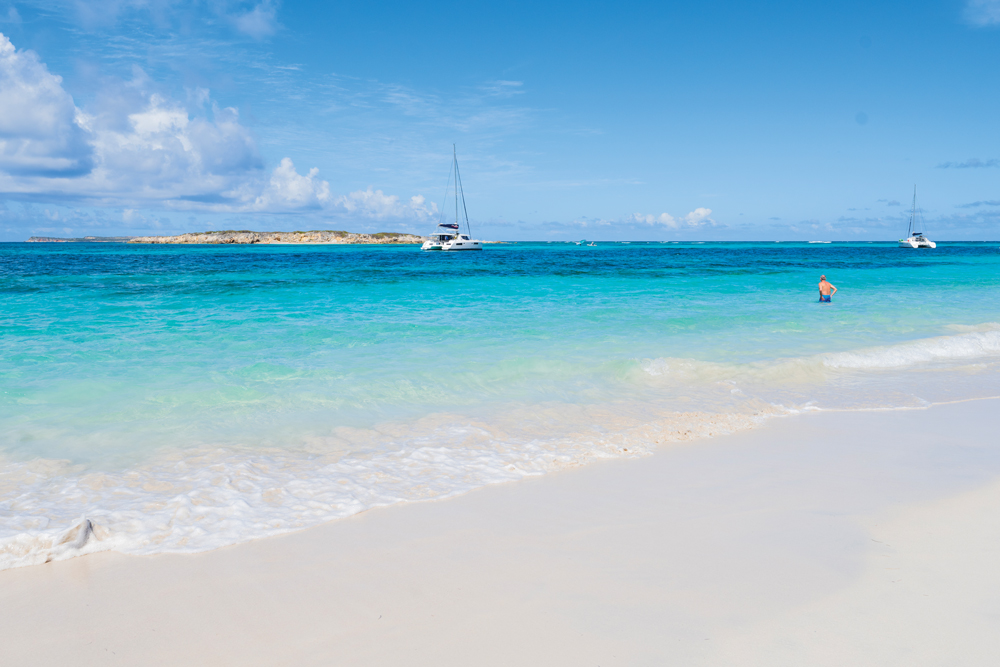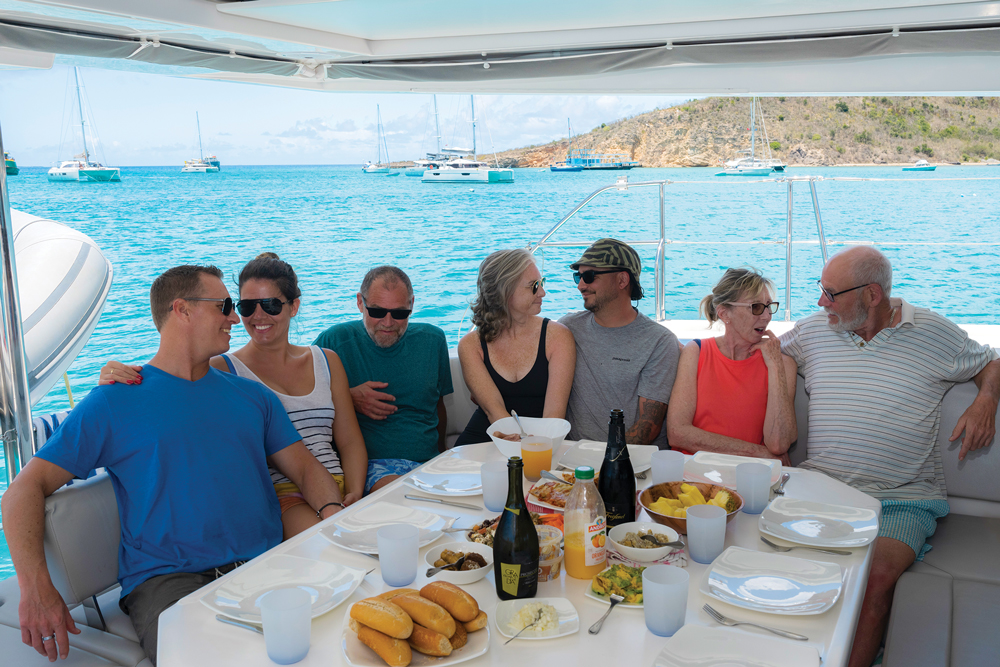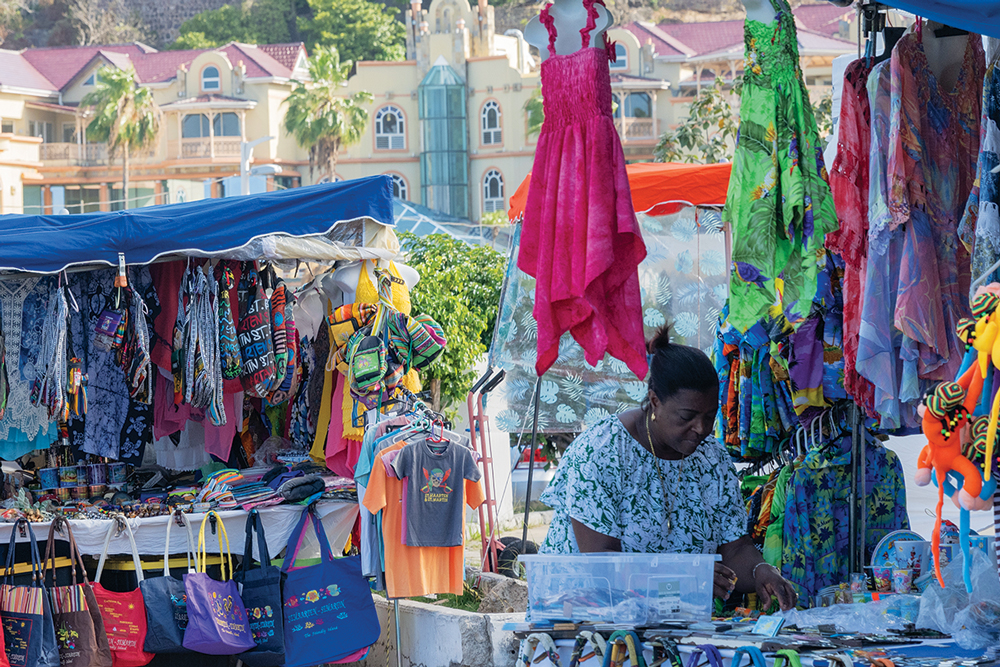Allure of Anguilla
A charter cruise through the waters off St. Martin offers sparkling waters, delectable food and unsurpassed relaxation

As we pointed east, Anguilla to our port was a flat swathe of green punctuated by several groupings of white buildings. The French coast to starboard featured voluptuous mountains, villas and resorts scattered on the emerald slopes in patches of color of coral and pink and yellow and blue, looking like children’s building blocks. Several beaches beckoned but we stayed our course.
The waves grew, the occasional diamond-studded splash of spray soaking the crew lounging forward. By noon those waves were attacking Wallis at around 8 or 9 feet almost on the bow and the boat pitched and yawed. Despite consistent boat speed of around 7 knots it was starting to feel like a slog.

Plan B became Plan A. Next stop Tintamarre. I’d negotiated these waters as crew during two different Heineken Regattas over the years. Passing Tintamarre each time I’d gazed in that direction, wondering what it would be like to anchor here.
Having read the “Cruising Guide” to the Leeward Islands in which Doyle had mentioned a “superb beach” at Tintamarre, I was sold. That night was a bit rolly, but easterlies meant we were still fairly protected in Tintamarre’s lee.
Next morning four of us went ashore and landed at a gorgeous but small beach guarded by orange-red cliffs a hundred feet high. Doyle was right. This uninhabited island is part of a marine reserve, so you must prepay for your pass, but it is worth the visit. We explored the rugged landscape then chilled on the beach before casting off. There were several mooring balls here, but “you’re safer to anchor instead,” cautioned The Moorings staffer Belgrave.
We didn’t rush the morning beach time as we were still getting our sea legs, the sun felt amazing after a Canadian winter, and our next waypoint was nearby.
So close, in fact, that after a quick passage of reaching punctuated by a couple of jibes, we lashed Wallis to a mooring ball off Creole Rock outside Grand Case and donned masks and fins for a snorkel, discovering some fan and elkhorn coral and a reasonable quantity and variety of fish. Going ashore later at Grand Case was a trip highlight.

While devising our float plan I’d discovered that during high season this village reclining beside a gorgeous beach, a village famous for great restaurants, boutiques and lolos (St. Martin’s take on roadside food stands), presented a mini-version of Carnival on Tuesday evenings.
Once ashore we strolled the narrow Boulevarde de Grand Case, enveloped in blue-gray smoke carrying the aromas of grilled lobster and jerk chicken courtesy of those lolos, distracted by the distorted reggae music emanating from makeshift speakers as big as me. A party atmosphere prevailed mere steps from the dinghy dock.
Along with my wife Sharon and our friends, Barb and Dave, I opted to dine at Villa Royale for dinner. The younger crowd went down the shore to Rainbow Café. They were happy with their meal. I was thrilled by mine.
Amid a setting that combined Caribbean with France (think tablecloths of traditional tartan), the waiter brought us first home-made warm bread, then a creole platter thanks to chef Leo. Think crab and christophene, sausage and cod fritters, all burning with Creole spice, a repast that could hold its own in New Orleans.
I was just finishing my dessert of insanely delicious chocolate lava cake when the waiter informed us the festivities were beginning outside and we rushed outside to be entertained by a duet of dancers in Mardi Gras costumes, to be serenaded by a rousing band. Grand Case had just become one of my favorite Caribbean anchorages.

Comments